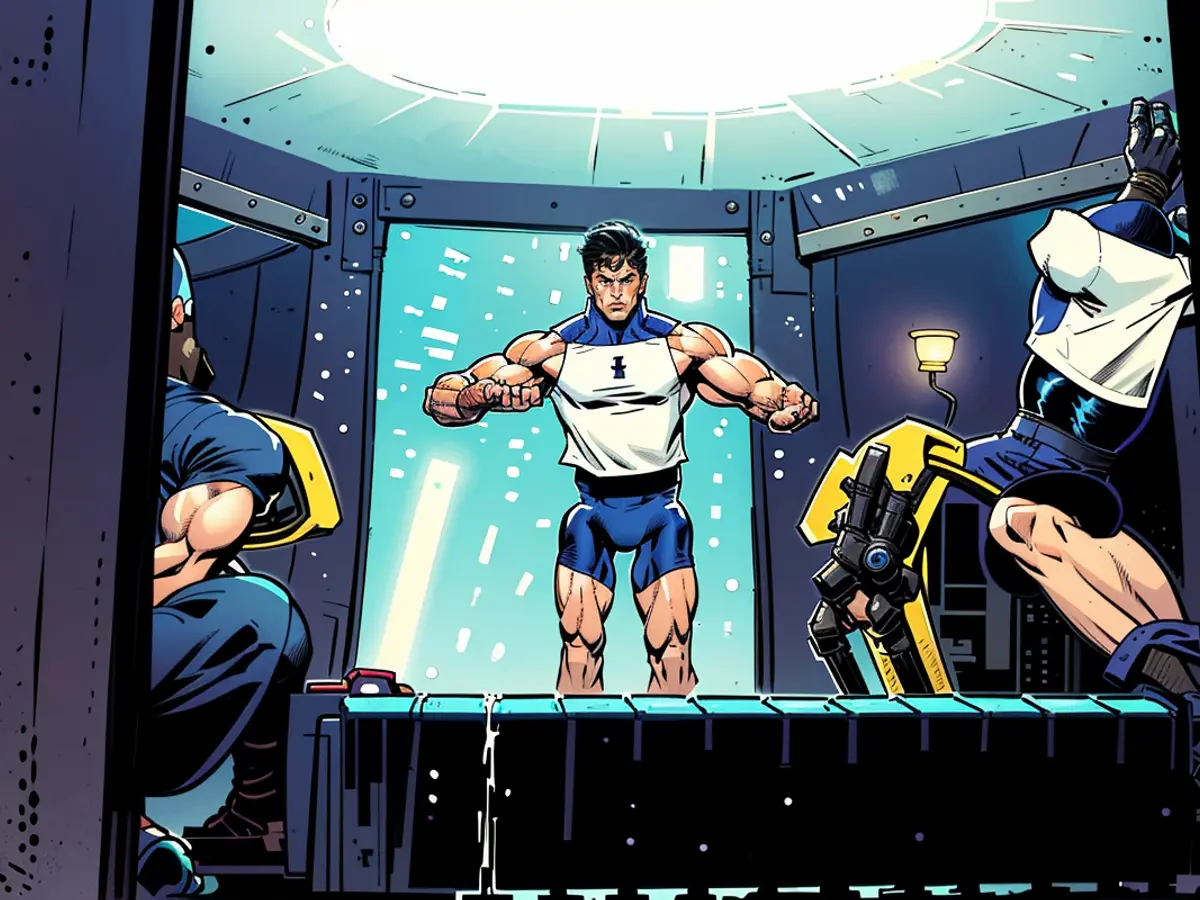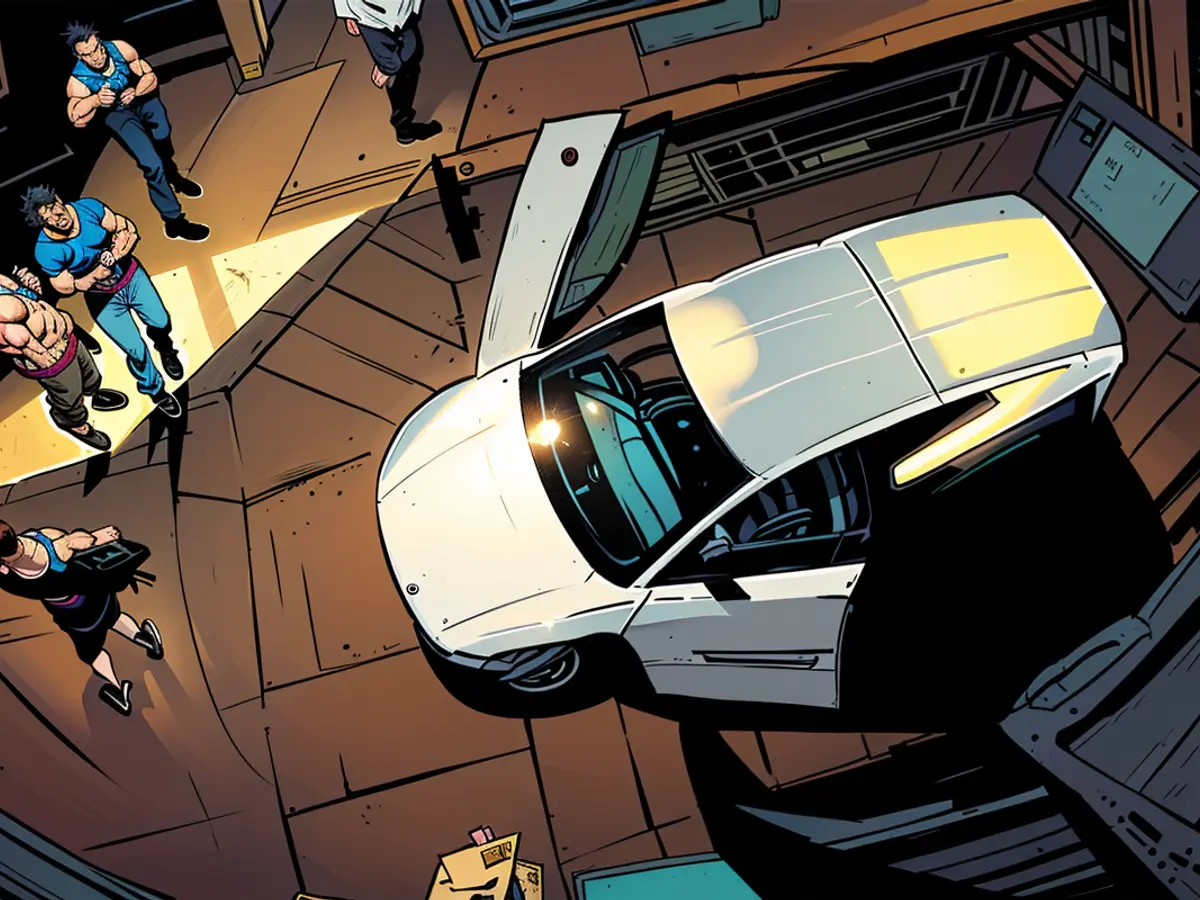Musk experiences a ride in a demonstration of robot-oriented taxi service
At the presentation, the CEO, Elon Musk, personally arrived in a taxi: Musk unveiled Tesla's Robotaxis. However, it'll take some time before these cars are ready for passenger service. Musk also featured his robots doing a dance routine.
Tesla aims to revolutionize its offerings with Robotaxis, as presented by Musk at a studio in Hollywood. Called a "Cybercab," Musk himself drove the prototype. Musk highlighted that autonomous vehicles could be utilized five to ten times more than traditional cars, considering their idle time. The Tesla Robotaxi boasts a sleek design, featuring two seats, butterfly doors, and no steering wheel or gas pedal. Though Musk was vague about the release date, production is planned for 2026, and prices are anticipated to be under $30,000.
Tesla intends to operate a fleet of self-driving taxis, which customers can hail via an app. Although other companies like Waymo have developed robotaxis, Tesla's entry into the market adds a new dimension, with their vehicles making nearly 100,000 passenger trips weekly in four US cities.
Musk also unveiled an autonomous minibus named "Robovan," which can transport up to 20 people. Additionally, he showcased his Optimus humanoid robots, highlighting their advancements. These robots will interact with the public, serving drinks at bars, among other tasks. Prices for the Optimus robots are estimated to range from $20,000 to $30,000.
However, there are concerns about the safety of Tesla's autonomous vehicles. Critics point out the difficulties in reacting to unexpected circumstances and accurately detecting hidden obstacles, given that Tesla relies on cameras for being less expensive than rivals using sensors and AI. Experts also express concerns about the reliability of the AI system, which can be hard to analyze in case of accidents.
Paraphrased text:
At the Serenade, the CEO, Elon Musk, made a grand entrance: Musk premiered Tesla's Robotaxis, though it would take a while before these cars could be used for passenger transfers. Musk also showcased his robots performing a dance routine.
Tesla is poised to make a significant impact with Robotaxis, as Musk revealed in a Hollywood studio. The "Cybercab" was driven by Musk himself to demonstrate the prototype. Musk emphasized that autonomous cars have the potential to be used twice as much as regular vehicles, given their downtime. The Tesla Robotaxi boasts a stylish design, featuring two seats, butterfly doors, and no steering wheel or accelerator. Notably, Musk did not provide a specific timeline for market availability. However, the vehicles are slated for manufacturing in 2026, and consumers should expect prices under $30,000.
Tesla is aiming to establish a self-driving taxi service, which users can summon via an app. Although other companies like Waymo have previously developed robotaxis, Tesla's expansion into the market adds a fresh perspective, with robotaxis making roughly 100,000 passenger trips weekly in four US cities.
Musk also unveiled an autonomous passenger shuttle named "Robovan," capable of carrying up to 20 people. Furthermore, he showcased his Optimus humanoid robots, highlighting their development. These robots are expected to engage with the community, providing services such as bar tendering, among other tasks. Estimated prices for the Optimus robots vary from $20,000 to $30,000.
Nonetheless, there are apprehensions about the safety of Tesla's autonomous vehicles. Critics argue that reacting to unforeseen incidents and accurately detecting camouflaged obstructions are challenges. The fact that Tesla only uses cameras, as opposed to more expensive sensor setups, further complicates matters. Moreover, the AI system's opacity poses challenges in identifying faults related to accidents.
The introduction of Tesla's Robotaxis aims to significantly impact the transportation industry. Despite being showcased by Musk, it may take some time before these autonomous vehicles are available for passenger service.
The economy, specifically the transportation sector, could potentially benefit greatly from Tesla's Robotaxis, given their potential for increased usage compared to traditional cars.









